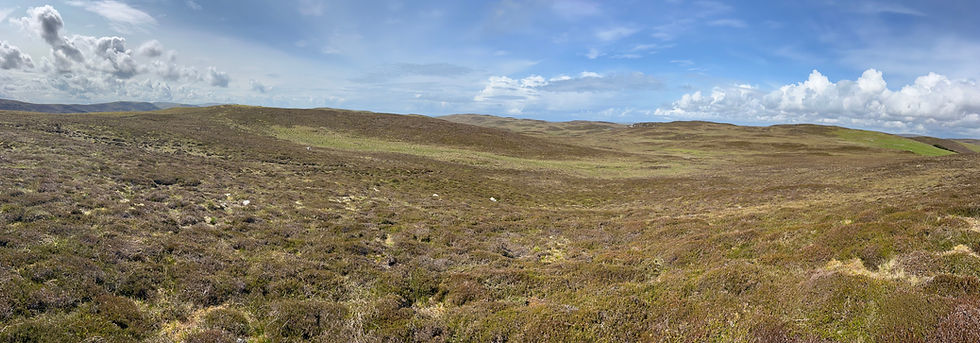Site in Focus - Tangwick Watermill
- Stephen Jennings

- Jun 5, 2018
- 2 min read

The Tangwick horizontal mill, not far from the Tangwick Haa Museum, is a reconstruction of the typical Shetland mill, often referred to locally as the click mill due to the sound of the clapper. The site is that of the original mill as referenced in the diary of local schoolteacher Christopher Sandison who, along with his son, helped to construct it and the dyke in 1829 with Donald Anderson of the Scarff. Rebuilt utilizing local stone, it uses the original millstones found on the site. The roof of the original and the recreation was covered in poans (small strips of green turf) but these have since mostly disappeared since the 2007/2008 restoration project by HEARD (Hillswick, Eshaness Area Regeneration and Development Association).
Characteristic of communities in the late 18th and 19th century, the horizontal mill was used to grind Shetland Bere (Barley) and Shetland Aets (Oats) to produce the flour used for baking and would likely have supported all eight Tangwick crofts at the time.
Entering the horizontal mill, which is open to the public and not far off the road to the Tangwick Haa Museum, you are greeted by storyboards providing some information on the mill and a comprehensive drawing detailing how they operated. What is as fascinating is a bit of folklore associated with this mill in particular:
Sjopiltie was the local name for a kind of water kelpie who appeared from a funnel hole in the rocks at the Cletts beyond the Hoop. Sjolpiltie normally appeared before bad weather and was accompanied with a blue flame. Sometimes he appeared in the form of a horse as in this story.
The story goes that one dark winter night an old man from the croft of London near Tangwick took a kishie of grain to grind at this mill. When he emerged from the mill it was moonlight and he saw a small black horse standing by the wall. As it seemed quite tame, and as he was tired because it was late at night, he thought he would get on the horse’s back and get some help in carrying his burden home. They started uphill but the horse would not go towards the gate but set off to the westward towards the sea. He struggled in vain to control the horse and, finally realising that this must be Sjopiltie, he flung himself and his kishie off just before Sjopiltie disappeared down a hole in the rocks in a blue streak of flame. This hole in the rocks is known locally as Sjolpiltie's Höl.
For Further Information:
The HEARD Watermill Project









Comments